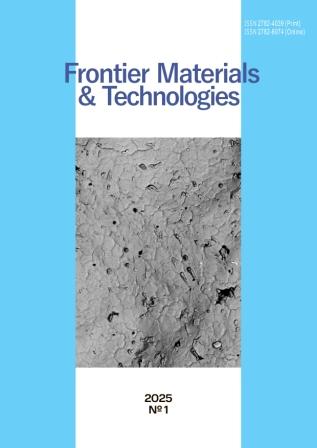Development of a laboratory tribotechnical facility for testing PDC cutters for wear
- Authors: Kolibasov V.A.1, Ibatullin I.D.1, Novikov V.A.1
-
Affiliations:
- Samara State Technical University
- Issue: No 1 (2025)
- Pages: 9-19
- Section: Articles
- URL: https://vektornaukitech.ru/jour/article/view/1021
- DOI: https://doi.org/10.18323/2782-4039-2025-1-71-1
- ID: 1021
Cite item
Abstract
In the practice of drilling oil and gas wells with diamond bits equipped with PDC cutters, cutter quality non-compliance with the declared class occurs. At the same time, the currently used methods of full-scale testing, when granite stone is used as a counterbody, are time-consuming and expensive, which complicates their use for prompt incoming inspection of new batches of PDC cutters arriving for assembly of diamond bits. This necessitated the development of a laboratory tribotechnical facility for quantitative assessment of the ability of PDC cutters to resist abrasion against abrasive materials. The study covers the development of a specialized tribotechnical facility that allows testing PDC cutters of various sizes for wear during friction against a diamond-containing metal work face, for which it is proposed to use diamond cutting wheels. The developed laboratory tribotechnical facility includes: an electromechanical rotary drive (a drilling-and-milling machine); a measuring unit with sensors for normal loads, friction force and temperature of cutter self-heating during testing; a lever loading mechanism; a set of mandrels for the possibility of installing PDC cutters of various sizes; a data collection system and licensed software. The results of practical evaluation of the developed laboratory tribotechnical facility on PDC cutters of various batches showed that testing on the new equipment allows for quick collection of data on the wear rate of the working edges of PDC cutters. The developed methods, equipment and criteria can be used to certify the wear resistance of PDC cutters.
About the authors
Vladimir A. Kolibasov
Samara State Technical University
Author for correspondence.
Email: mahp@samgtu.ru
ORCID iD: 0000-0002-0503-2533
postgraduate student, assistant of Chair “Machinery and Equipment of Petroleum and Chemical Production”
Россия, 443100, Russia, Samara, Molodogvardeyskaya Street, 244Ildar D. Ibatullin
Samara State Technical University
Email: idi71@yandex.ru
Doctor of Sciences (Engineering), Professor, Head “Chair of Machinery and Equipment of Petroleum and Chemical Production”
Россия, 443100, Russia, Samara, Molodogvardeyskaya Street, 244Vladislav A. Novikov
Samara State Technical University
Email: vladislav_novyi@mail.ru
ORCID iD: 0000-0002-8052-305X
PhD (Engineering), assistant professor of Chair “Metal Science, Powder Metallurgy, Nanomaterials”, senior researcher of the Laboratory of X-ray Diffractometry, Electron and Probe Microscopy
Россия, 443100, Russia, Samara, Molodogvardeyskaya Street, 244References
- Neskoromnykh V.V., Popova M.S., Parakhonko E.V. Development of rock cutting tool with PDC cutters. Bulletin of the Tomsk Polytechnic University. Geo Assets Engineering, 2020, vol. 331, no. 2, pp. 131–138. doi: 10.18799/24131830/2020/2/2499.
- Nenashev M.V., Ibatullin I.D., Zhuravlev A.N., Kosulin S.I. Engineering tools and methods of PDC bits entrance quality control. Izvestiya Samarskogo nauchnogo tsentra Rossiyskoy akademii nauk, 2011, vol. 13, no. 4-3, pp. 835–838. EDN: PCLSTT.
- Konyashin I., Zaitsev A.A., Sidorenko D. et al. On the mechanism of obtaining functionally graded hardmetals. Materials Letters, 2017, vol. 186, pp. 142–145. doi: 10.1016/j.matlet.2016.09.130.
- Bogomolov R.M., Serikov D.Yu. Improvement of the cutting structures of the rolling cutter drill bits. Oborudovanie i tekhnologii dlya neftegazovogo kompleksa, 2018, no. 5, pp. 24–28. doi: 10.30713/1999-6934-2018-5-24-28.
- Vasilev A.A., Serikov D.Yu., Bliznyukov V.Yu. Improvement of drill bits of different types. Stroitelstvo neftyanykh i gazovykh skvazhin na sushe i na more, 2019, no. 6, pp. 28–31. doi: 10.30713/0130-3872-2019-6-28-31.
- Neskoromnykh V.V., Popova M.S., Komarovskiy I.A., Baochang L. Concave PDC cutter. Bulletin of the Tomsk Polytechnic University. Geo Assets Engineering, 2022, vol. 333, no. 4, pp. 181–192. doi: 10.18799/24131830/2022/4/3488.
- Tretyak A.A., Krivosheev K.V. Winning combination of PDC cutter arrangement on a rock-destructing tool. Delovoy zhurnal Neftegaz.RU, 2025, no. 3, pp. 36–40. EDN: NCPITK.
- Bellin F., Dourfaye A., King W., Thigpen M. The current state of PDC bit technology. Part 1 of 3: Development and application of polycrystalline diamond compact bits have overcome complex challenges from the difficulty of reliably mounting PDC cutters in bit bodies to accelerated thermal wear. World Oil, 2010, pp. 41–46.
- Kolibasov V.A., Ibatullin I.D., Parfenov K.V., Gordeeva E.S. Development of procedure and device for abrasion test of PDC cutters. Neftegazovoe delo, 2024, vol. 22, no. 6, pp. 53–62. doi: 10.17122/ngdelo-2024-6-53-62.
- Kuftyrev R.Y., Polushin N.I., Kotel’nikova O.S., Laptev A.I., Sorokin M.N. Wear resistance of polycrystalline diamond cutters for drill bits. Steel in Translation, 2017, vol. 47, no. 9, pp. 594–598. doi: 10.3103/S096709121709008X.
- Trushkin O.B., Akchurin Kh.I. PDC cutter pressure on plastic-brittle rock in the process of its destruction. Journal of Mining institute, 2020, vol. 244, pp. 448–453. doi: 10.31897/PMI.2020.4.7.
- Kanyanta V., Ozbayraktar S., Maweja K. Effect of manufacturing parameters on polycrystalline diamond compact cutting tool stress-state. International Journal of Refractory Metals and Hard Materials, 2014, vol. 45, pp. 147–152. doi: 10.1016/j.ijrmhm.2014.03.009.
- Moseley S.G., Bohn K.P., Goedickemeier M. Core drilling in reinforced concrete using polycrystalline diamond (PDC) cutters: wear and fracture mechanisms. International Journal of Refractory Metals and Hard Materials, 2009, vol. 27, no. 2, pp. 394–402. doi: 10.1016/j.ijrmhm.2008.11.014.
- Borisov K.I., Rubtsov V.L. Analytical investigation of rock temporal strength property at PDC cutting. Izvestiya Tomskogo politekhnicheskogo universiteta, 2014, vol. 325, no. 1, pp. 172–178. EDN: SITAEP.
- Yahiaoui M., Gerbaud L., Paris J.-Y., Denape J., Dourfaye A. A study on PDC drill bits quality. Wear, 2013, vol. 298-299, pp. 32–41. doi: 10.1016/j.wear.2012.12.026.
- Ahmed O.S., Adeniran A.A., Samsuri A. Computational intelligence based prediction of drilling rate of penetration: a comparative study. Journal of Petroleum Science and Engineering, 2019, vol. 172, pp. 1–12. doi: 10.1016/j.petrol.2018.09.027.
- Zhao Y., Noorbakhsh A., Koopialipoor M., Azizi A., Tahir M.M. A new methodology for optimization and prediction of rate of penetration during drilling operations. Engineering with Computers, 2019, vol. 3, pp. 587–595. doi: 10.1007/s00366-019-00715-2.
- Tretyak A.Ya., Kuznetsova A.V., Borisov K.A. Determination of PDC cutter breakdowns using regression and neural network modeling. Bulletin of the Tomsk Polytechnic University. Geo Assets Engineering, 2019, vol. 330, no. 5, pp. 169–177. doi: 10.18799/24131830/2019/5/275.
Supplementary files







